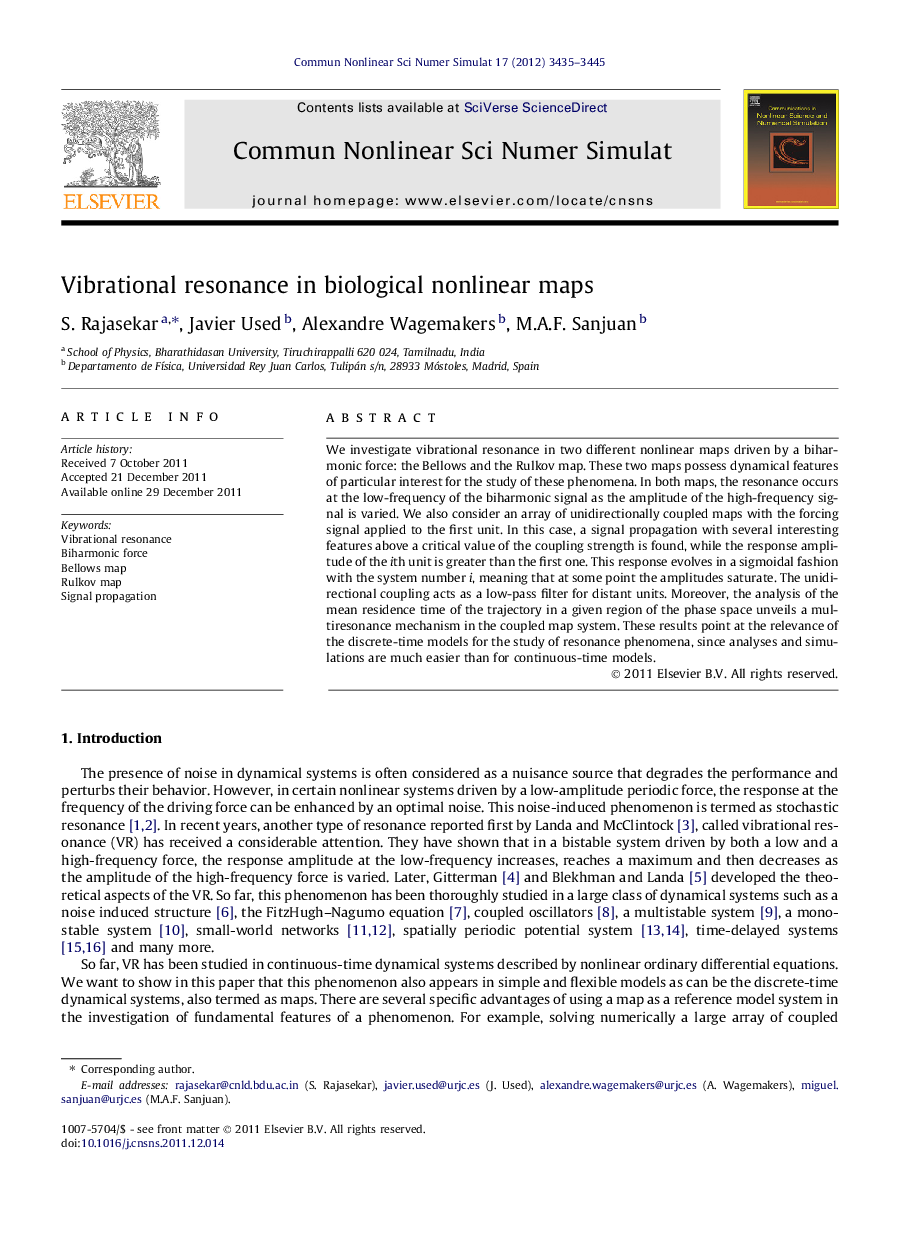| کد مقاله | کد نشریه | سال انتشار | مقاله انگلیسی | نسخه تمام متن |
|---|---|---|---|---|
| 759410 | 896476 | 2012 | 11 صفحه PDF | دانلود رایگان |

We investigate vibrational resonance in two different nonlinear maps driven by a biharmonic force: the Bellows and the Rulkov map. These two maps possess dynamical features of particular interest for the study of these phenomena. In both maps, the resonance occurs at the low-frequency of the biharmonic signal as the amplitude of the high-frequency signal is varied. We also consider an array of unidirectionally coupled maps with the forcing signal applied to the first unit. In this case, a signal propagation with several interesting features above a critical value of the coupling strength is found, while the response amplitude of the ith unit is greater than the first one. This response evolves in a sigmoidal fashion with the system number i, meaning that at some point the amplitudes saturate. The unidirectional coupling acts as a low-pass filter for distant units. Moreover, the analysis of the mean residence time of the trajectory in a given region of the phase space unveils a multiresonance mechanism in the coupled map system. These results point at the relevance of the discrete-time models for the study of resonance phenomena, since analyses and simulations are much easier than for continuous-time models.
► Network of Bellows and Rulkov maps are shown to exhibit vibrational resonance.
► The response amplitude evolves in a sigmoidal fashion with the unit number.
► The unidirectional coupling used acts as a low-pass filter for distant units.
► The mechanism of multiresonance is explained in terms of mean residence time.
Journal: Communications in Nonlinear Science and Numerical Simulation - Volume 17, Issue 8, August 2012, Pages 3435–3445